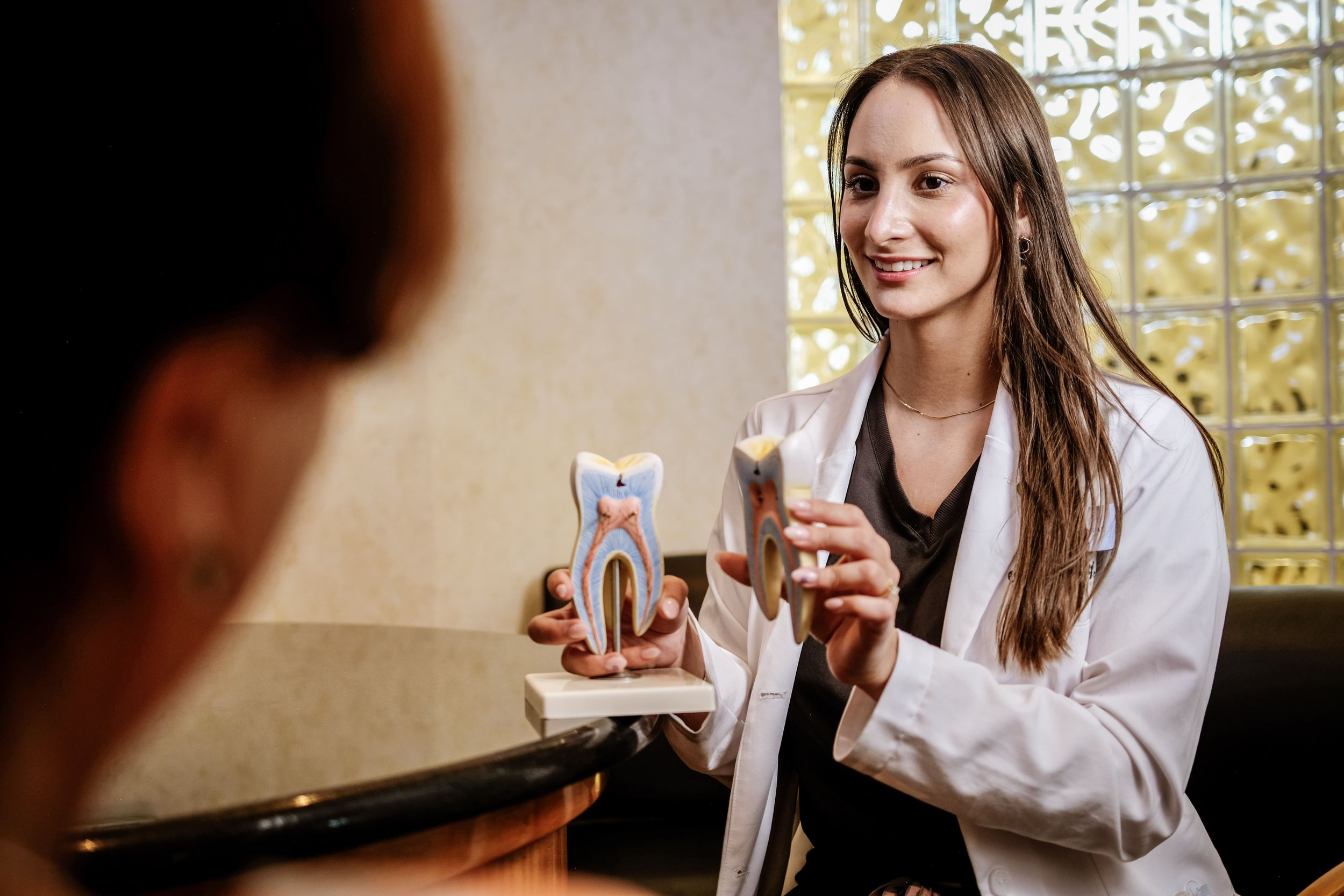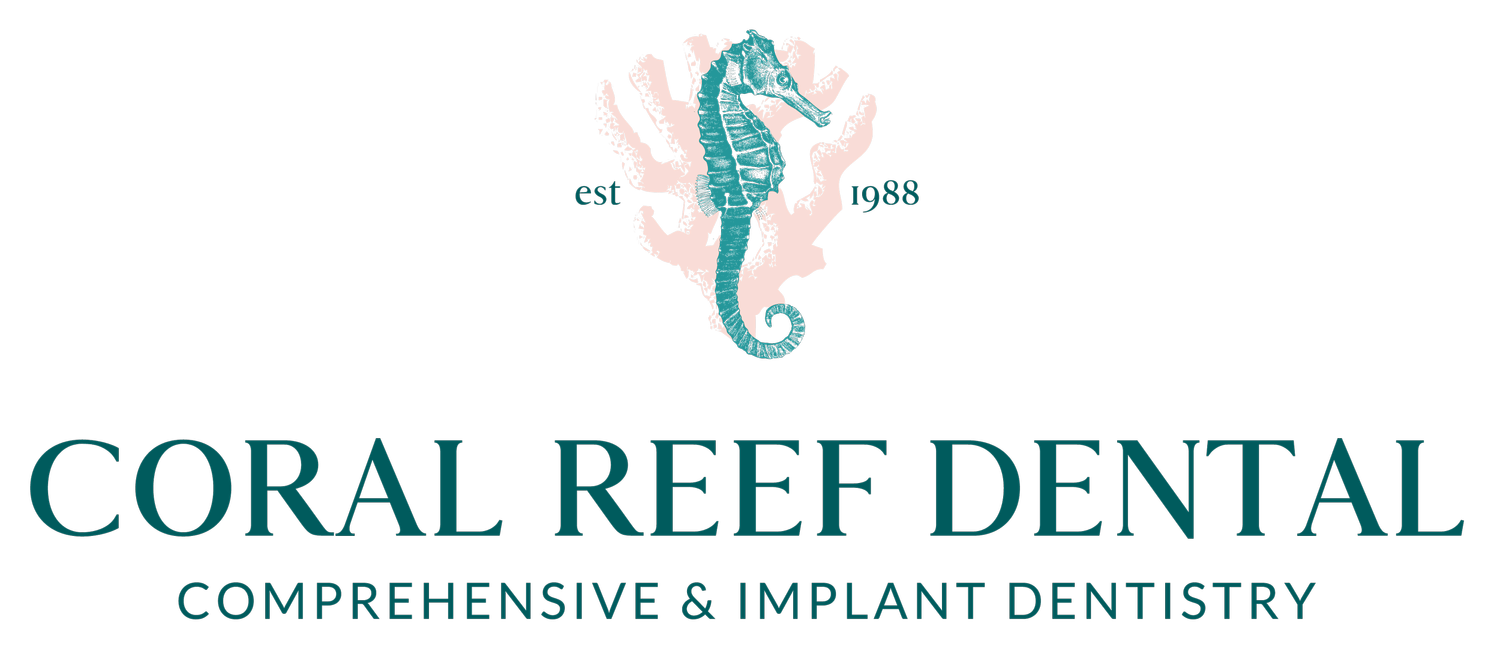
ROOT CANALS in Palm Harbor
Cause & Treatment
Often preceded by excessive decay, trauma or cracks, a root canal treats an infection inside the tooth (the pulp) when the tooth’s internal nerve dies and is the sole remedy that preserves the patient’s natural tooth. Diagnosis is done by x-ray and/or symptoms.
A root canal, endodontic therapy, remedies a tooth that has infected pulp, and the intention is to preserve the patient’s natural tooth. Likewise, a total extraction provides the same remedy for the infected pulp, however, the tooth is not preserved and a total replacement is required following the extraction. If the infected tooth is extracted, the most common replacement options are a dental bridge or a dental implant.
The pulp of a tooth contains the blood vessels, nerves, and connective tissue inside a tooth, damage to the pulp can result in the death of a tooth.
A root canal is the most effective means of saving a tooth when the pulp is infected, and is often the preferred treatment given it is less costly overall and less involved than total extraction and replacement.
The complexity, cost and precise method of treatment associated with a root canal is directly related to the location and complexity of the problem within the mouth. Consult with your local Comprehensive Dentist to discuss a treatment plan for your root canal.
American Dental Association uniform procedure codes and treatment descriptions categorize root canals as one of three types:
Root Canal, Front Tooth
Root Canal, Mid tooth
Root Canal. Rear Tooth
Symptoms: Pain (moderate to extreme), sensitivity to hot and cold.
Course of Treatment:
The first step in the care of this problem is to have an examination with a dentist, which may be immediately followed by treatment. To schedule an appointment for a Root Canal with our Comprehensive Dentist in Palm Harbor, please call our office.
Coral Reef Dental Group is generally able to schedule appointments quickly, whether you’re looking for an initial visit or a follow-up appointment.

A root canal can be performed using sedation dentistry, in combination with local anesthesia.
Coral Reef Dental Group offers patient’s the choice of four forms of sedation during a root canal procedure:
Inhalation Sedation (nitrous oxide)
Oral Sedation (a pill)
Oral Sedation in combination with Inhalation Sedation
I.V. Sedation
Once the infected area is cleaned, shaped and disinfected, the canals within the tooth are sealed to prevent future infections. The desired result is to save the tooth despite the death of the nerve. Most root canals can be performed in one visit; tooth reconstruction is a separate procedure.
Tooth Reconstruction Following a Root Canal
Following a root canal one of the following forms of tooth reconstruction is used:
Filling
Crown
Other factors which determine the precise method of reconstruction may largely rest with the patient, including the use of a crown (cap) to protect the reconstructed tooth, and/or cosmetic treatments, to ensure the uniform color of your teeth following the procedure.
Following treatment of the diseased area, some form of tooth restoration is required, ranging from a simple filling to a post and crown. If a tooth is not restored appropriately after root canal therapy, it is prone to fracture, decay and/or re-infection.
The type of tooth restoration which takes place is dependent on the conditions present leading up to the root canal procedure. In most instances, a temporary filling is placed in the tooth following the root canal and remains in place until the tooth reconstruction takes place in a subsequent visit.
Aftercare
Most patients’ experience little pain following a root canal, however, pain relievers are generally provided to address any discomfort. Systemic antibiotics may be indicated.


